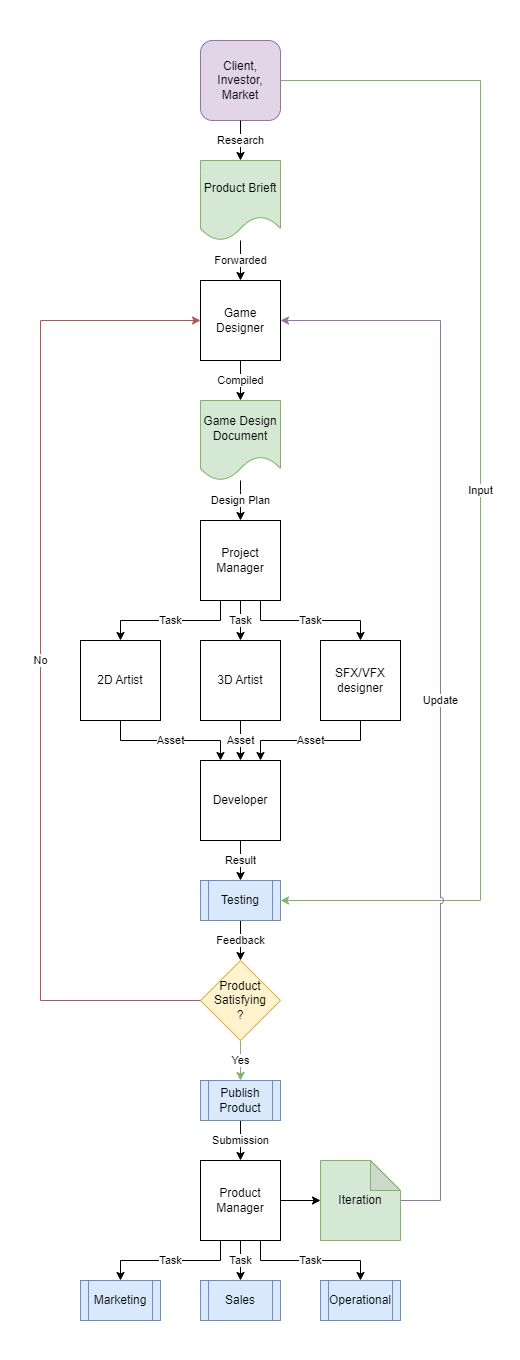Starting a Game Studio? Use This Workflow to Run Your Game Business Like a Pro
If you’re planning to start your own game studio and especially if you’re working with clients, investors, or have a clear market in mind you need more than creativity. You need structure.
The flowchart above illustrates a professional production pipeline, showing how to turn an idea into a published product, and how to organize your team and tasks efficiently from start to finish. Think of it as a game studio operation blueprint.
Let’s break it down:
1. Start With Market Alignment
Your game idea must begin with real-world input:
- Clients may have specific needs.
- Investors may expect commercial viability.
- Your market research may reveal a gap or opportunity.
This input leads to a Product Brief a short document that captures the goal of the game, who it’s for, and why it matters.
2. Let the Game Designer Translate the Vision
The Game Designer takes the product brief and begins shaping the game concept. This includes:
- Gameplay ideas
- User experience goals
- Technical feasibility
They compile all this into a Game Design Document (GDD) your team’s creative and technical playbook.
3. Use a Project Manager to Coordinate Production
With a GDD in place, a Project Manager translates ideas into action:
- Breaks down tasks across departments
- Organizes timelines and priorities
- Ensures cross-functional alignment
This is where your production team activates:
- 2D Artists (UI, icons, concept art)
- 3D Artists (characters, environments, props)
- SFX/VFX Designers (audio, animations, polish)
- Developers (programming, tools, integration)
Each contributes assets and functionality to the working build.
4. Test, Refine, and Decide
Once a working version is ready:
- The Testing Team checks gameplay quality, bugs, and usability.
- If the product isn’t ready, feedback goes back to the team for iteration.
- If it passes quality standards, you’re ready to publish.
5. Publish and Transition to Live Operations
With a finished build:
- The Project Manager handles submission, platform requirements, and versioning.
- The game is published, but that’s not the end.
Now comes the operational phase, including:
- Marketing (ads, social, press)
- Sales (pricing, launch strategy)
- Live Ops (support, updates, events)
And of course, continuous iteration based on player feedback and performance metrics.
Why This Matters for New Game Studios:
This workflow helps you:
- Present your process to investors and clients professionally
- Assign roles clearly, even with a small team
- Avoid bottlenecks and miscommunication
- Prepare for long term sustainability, not just a one off game
Want the Flowchart ?
This article is based on a flowchart that visualizes the entire process.

Tip: Even If You’re a Small Team, Think Like a Studio
You don’t need 50 people to follow this structure. Even a small indie team can adapt this model:
- A single person may wear multiple hats
- Tools like Trello, Notion, or Monday.com can help manage tasks
- The GDD doesn’t have to be long but it should be clear
The point is to treat your project like a business from day one!